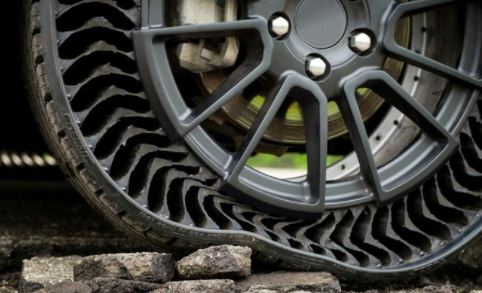Simple Technology On the Presence of Airless Tire
Simple Technology On the Presence of Airless Tire - Until now, car manufacturers everywhere still rely on wind-filled tires or pneumatic tires.
Easy maintenance and strong tire structure in all road conditions make wind tires still a prima donna.
But over time and technology, it is clear that wind tires become one of the 'most beautiful' components in a modern car.
Therefore, some manufacturers such as Michelin and Bridgestone began to introduce windless tires or airless tires for cars.
Reporting from the article hackaday.com and the release of the Michelin Uptis concept, let's see how tires can be 'without air.'
The concept of airless tires for cars is nothing new anymore.
Michelin tire manufacturer has been conceptualizing airless tires since 2005 with a tire called 'Tweel.'
Even if you are willing to dig again, airless tires have been conceptualized since the time of World War II.
But since long ago until now, airless tires have one uniqueness on the inner tire side, namely spoke that separates tread and alloy wheels.
These spokes are powerful networks capable of supporting the weight of the car and are also flexible enough to withstand road impacts.
In addition, spoke airless tires are also a framework for tire integrity that was supported by the pumped wind.
Spoke designs on airless tires are quite diverse: ranging from fan-like at Michelin Uptis to honeycomb.
Well, the advantage of using a 'no air' design like this is that tires no longer risk 'deflated' when running over sharp nails or stones.
In addition, tires can be much more durable because there is no more wear and tear from the wrong filling of tire wind.
The effect on the environment is positive because of the reduced number of tires thrown away.

